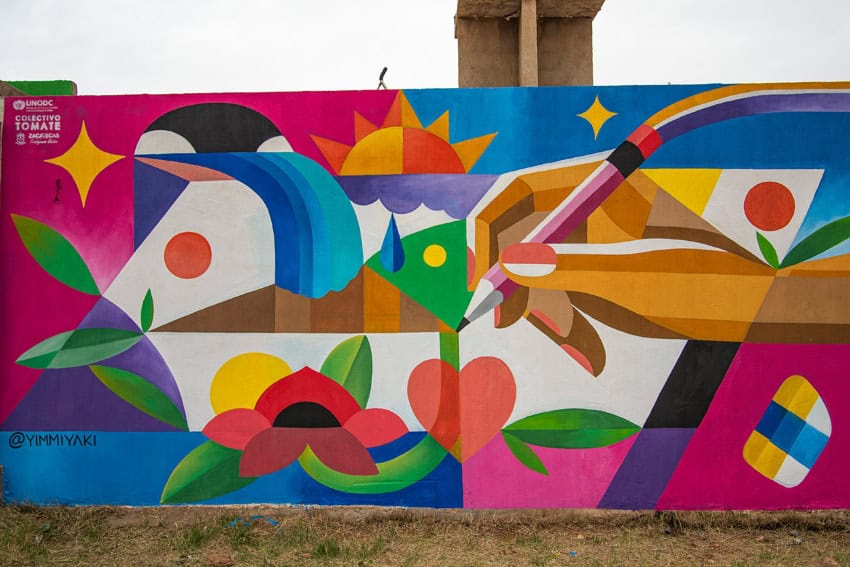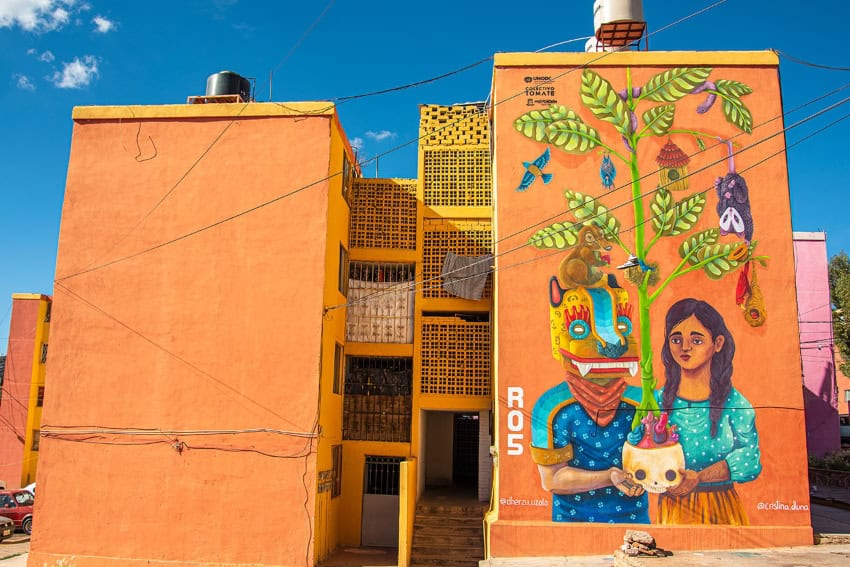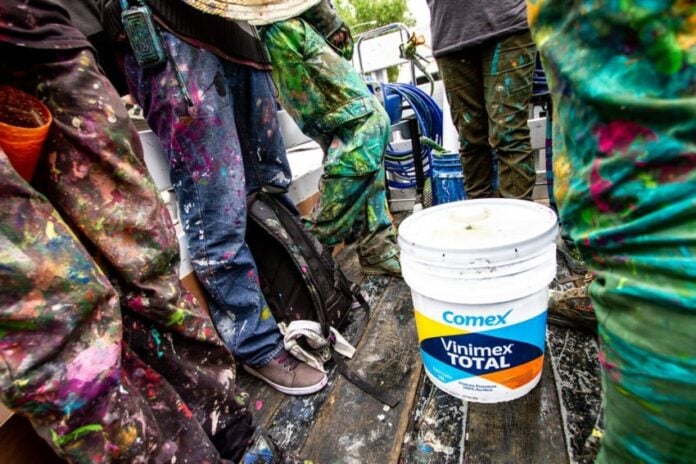In an attempt to refresh my lovely little Mexico City apartment, I recently painted an accent wall in my dining area. Naturally, I purchased the paint — a subtle shade of eggplant — from one of Mexico’s ubiquitous Comex paint stores.
Since that fateful day, I’ve been fascinated (one might even say obsessed) with the impressive number of Comex paint stores around the city. The Cuauhtémoc borough alone is home to at least 10–15, and more than 4,000 can be found across Mexico. How did that happen? In a world of Sherwin-Williams and Pintucom, how did Comex colors sweep the Mexican nation?

Comex’s history turns out to be a story far more interesting than I could have anticipated.
Fleeing anti-Semitism in Syria
Comex’s rise actually begins in the Middle East. The Ottoman Empire’s grip on Syria led to tight controls on Jewish economic activity. With rising anti-Semitism and diminishing financial prospects, Syrian Jews — mainly from Damascus and Aleppo — took advantage of Porfirio Diaz’s welcoming immigration program, which encouraged foreign enterprise.
It was during these years that Marcos Achar Lobatón relocated his family to Veracruz from Syria. Like many Jewish merchants starting over in a new country, he had no money. So he started selling goods door-to-door on credit until he had built enough capital to relocate and open a small hardware store in Mexico City.
The store was called El Gallito. Here, Marcos and his son, José Achar, sold all sorts of home repair items — including paint.
A World War I paint mill changed everything
In the 1950s, everything about the Achar’s professional lives would change. One of the store’s clients was unable to pay a running debt in cash. To pacify the store owners, he offered an old World War I paint mill that he owned in Mexico City’s Independencia neighborhood, plus his labor to help operate it. The offer piqued José’s interest, and he quickly sealed the deal.
The unlikely pair began experimenting with making their own paint. The idea proved sound, and the family opened the first official factory in the San Antonio neighborhood, which covered half a city block. They called it Comercial Mexicana de Pinturas — Mexican Paint Company. It was later abbreviated to COMEX.

At this point, the Achar family had expanded from one hardware store to many, so they sold the product in their stores, plus in other outlets throughout the capital. In an ongoing attempt to ensure their paints were the best quality ones on the shelves, José hired innovative engineers, including some from Germany, to develop competitive products that also sounded fancy — think satin vinyl paint. This quickly turned Comex into a market threat, a fact which wouldn’t go unnoticed by competitors.
The competitor boycott that nearly destroyed COMEX
In the 1960s, eight competing paint companies decided to put a stop to Comex’s success. The parties banded together to coordinate a boycott against Comex products by personally pressuring hardware store owners to stop selling Comex products. José and his employees suddenly saw a wave of product returns and refund demands.
The resulting financial crisis left José with loads of unsold inventory and took Comex to the brink of bankruptcy. But instead of shuttering his factory doors, a tenacious José concocted a strategy that would change the Mexican paint landscape forever. He took that colorful surplus of paint, removed the middleman and sold it himself.
Comex’s first paint shop opened on Fray Servando Teresa de Mier Street in the historic center in the early 1960s, selling Comex paints directly to customers at reasonable prices. As an added boost to his business, José integrated one of the earliest franchise systems in Mexico, turning employees into partners and independent owners, a concept that would lead to rapid growth — and jobs — throughout Mexico City.
Latin America’s leading paint supplier transforms communities through color and art
It’s now 2025, and Comex is Latin America’s leading paint supplier. It currently holds Mexico’s largest market share for decorative and protective paints, and has the most extensive retail presence in Latin America. Its influence extends far beyond commercial dominance, leaning heavily into positive social impact with its artistic initiative, México Bien Hecho (Mexico Well-Made).
Through nationwide work with Mexican civil organizations, government entities, artists and residents, México Bien Hecho has transformed deteriorated urban centers into vibrant, colorful community hubs.

According to PPG Industries, a US-based global coatings and specialty materials company that bought Comex in 2014, México Bien Hecho has worked with over 10,000 volunteers, impacted 26 million people, and restored 500,000 square meters of public space using more than half a million liters of paint in less than a decade. The program has operated in every Mexican state, implementing art interventions that have improved perceptions of security in neighborhoods, boosted local tourism and increased youth sports participation.
Breaking Guinness World Records with paint-can art
Comex has even been awarded a Guinness World Record, thanks to Mexican artist Triana Parera, known for her large-scale portraits and thought-provoking installations. In 2017, the paint giant invited her to Acapulco to design the world’s largest mosaic made of paint cans.
Parera’s creation for Comex — measuring 52.065 square meters and comprising 4,968 one-liter paint cans — depicted a human hand intertwined with a DNA strand, symbolizing the company’s core values of creativity, teamwork and human connection through color.
Once the Guinness World Record was confirmed, Comex then donated all 4,900 unopened cans of paint to local community projects throughout Mexico.
What happened to the Achar family? From paint empire to modern philanthropy
The Achar family’s story didn’t end with Comex’s success. With the family’s fortune now at US $2.3 billion, ranking them No. 22 on Forbes’ Mexico Multimillionaires list in 2023, the Achars have made surprising moves into Mexican football. Marcos Achar Levy orchestrated the $2.3 billion sale to PPG Industries in 2014, partnering in the Celaya FC professional men’s soccer team. Meanwhile, their commitment to philanthropy continues, with Marcos receiving the Anáhuac University Award for Social Responsibility in 2024 for his leadership of the ProEmpleo Foundation. He founded the nonprofit in 1995 to combat unemployment in Mexico.
Comex’s journey of a modest hardware store accepting an old paint mill as a debt payment that became the world’s largest exclusive paint retail network with more than 4,000 stores globally exemplifies how a crisis can become an opportunity when met with innovation, community focus and unwavering determination.

The company that once faced extinction now stands as a testament to the power of direct engagement with customers and communities, proving that sometimes the best response to being locked out is to build your own door.
Bethany Platanella is a travel planner and lifestyle writer based in Mexico City. She lives for the dopamine hit that comes directly after booking a plane ticket, exploring local markets, practicing yoga and munching on fresh tortillas. Sign up to receive her Sunday Love Letters to your inbox, peruse her blog or follow her on Instagram.
